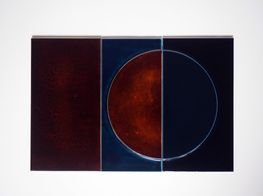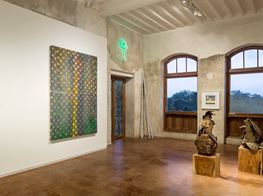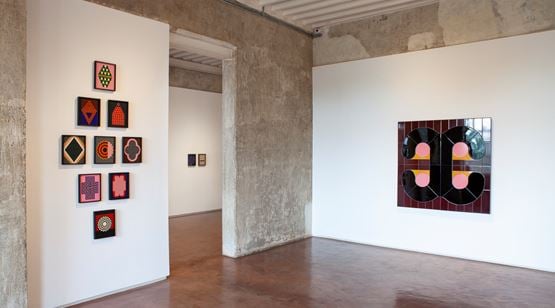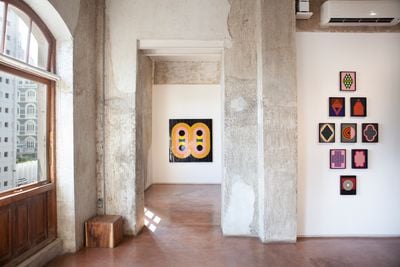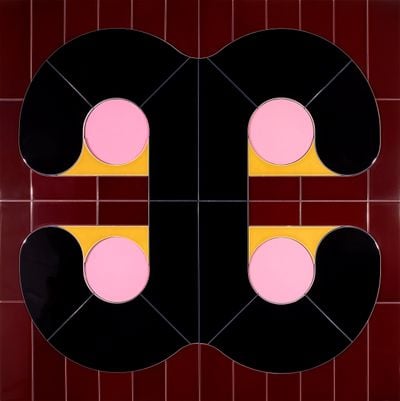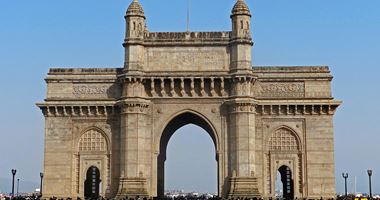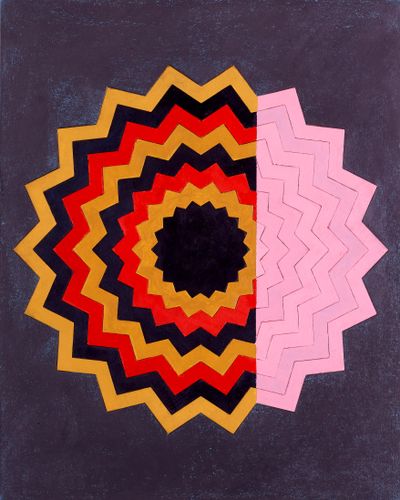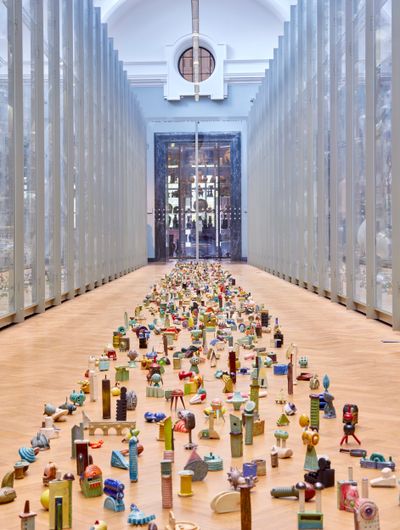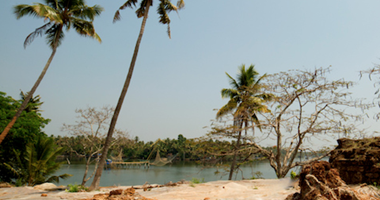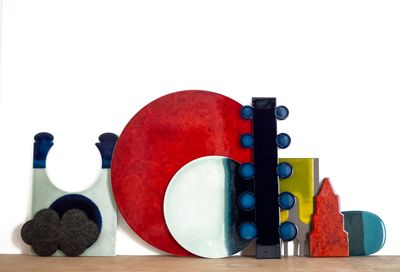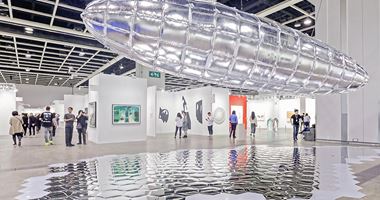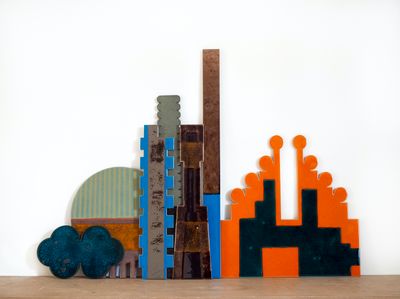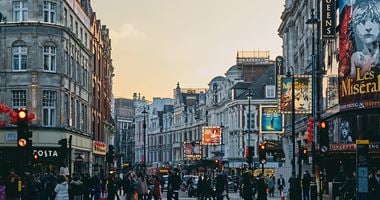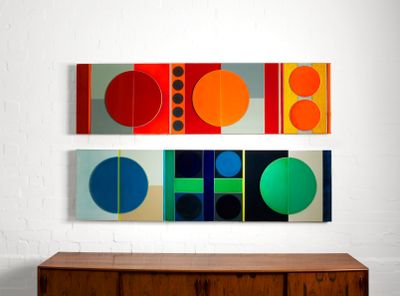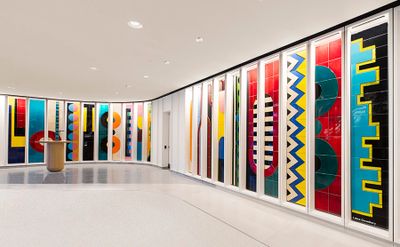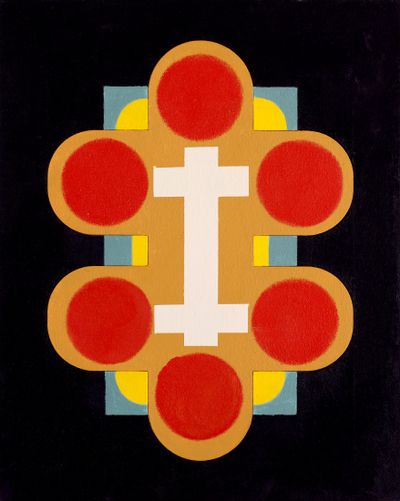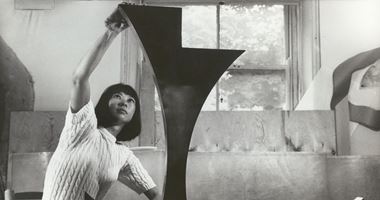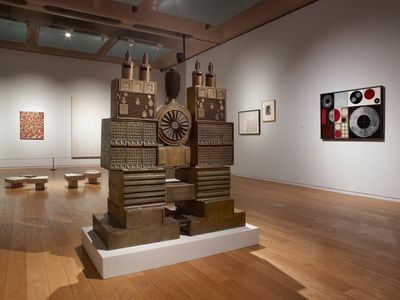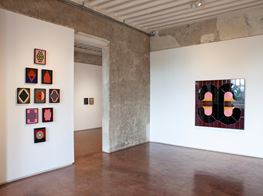Lubna Chowdhary’s Dynamic Abstractions
To be pigeonholed as a ceramic artist, says Lubna Chowdhary, 'is a bit like being identified as an actor who plays an evil genius and that's it!'1—a reductive typecast that Chowdhary's latest exhibition upends.

Exhibition view: Lubna Chowdhary, Code Switch, Jhaveri Contemporary, Mumbai (14 January–27 February 2021). Courtesy Jhaveri Contemporary. Photo: Mohammed Chiba.
When asked whether Code Switch at Jhaveri Contemporary (13 January–26 February 2021) marks a pivot from the material with which she is most associated, Chowdhary says, 'it is and it isn't.'2
Among characteristic ceramic tiles are works on paper and gouache paintings united by striking compositional geometries whose abstractions draw from religious iconography, alongside the symbolic language of consumerism.
Informed by Chowdhary's ongoing interest in modularity, the 'Code' and 'Sign' works (all 2020) are at once representations and constructions, both created from digital designs that are cut and assembled into image planes.
In the case of 'Code', 30 boards have been sliced and reassembled into rectangular forms to accentuate aligned and intersecting crosses, stars, triangles, circles, curves, and cubes contained within; while the three 'Sign' works consist of hand-glazed ceramic tiles cut using precision waterjet technology and mounted into a square frame to build a series of interlocked shapes.
Sign 1, for instance, centres on two black curves slotted back-to-back against burgundy rows, save for the mustard highlighting the negative space above a pink circle resting in every crescent, the lines of each component adding to a sharp yet irregular minimalist grid.
Both series, Chowdhary has explained, 'have the industrial precision of a flat material which has been technologically cut, then transformed through a manual application of colour that creates idiosyncrasies and irregularities.'3
Yet this concern likewise applies to 'Switch', the final series in Chowdhary's Mumbai show. Here, the industrial is represented by store-bought circular stickers that Chowdhary hand-coloured red and applied to graph paper to create minimalist compositions that ripple in their repetition; like the stretched hexagon that recalls Sol LeWitt's overlapping dimensions, in which two internal panels at once build up and disrupt a sense of solidity in Switch (Series 1: Number 3) (2020).
Across Chowdhary's practice is a dynamic interplay of the industrial and hand-made, as exemplified in works that interrogate and intervene in abstract and concrete environments. 'My earliest memories are of architectural space and the built environment,' Chowdhary has said; for example, the ship she travelled to England on in the 1970s from Tanzania, where she was born to parents from the Indian subcontinent in 1964.4
Since then, much of Chowdhary's engagement with abstraction has been about synthesising an embodied matrix of hybridity into form—an experience of code switching as a fluid, baseline norm.
There is an undeniable dynamism in the charged currents of movements, fusions, and disjunctions that are contained within Chowdhary's formal arrangements
One of the most explicit examples of this approach is Metropolis, which the artist describes as a diary of her research.5 Instigated in 1991 and completed in 2019, the work consists of around 1,000 clay sculptures formed from the artist's architectural and object memories of cities and anthropological collections arranged in a long, straight line.
Presented at the Victoria and Albert Museum in 2017—where Chowdhary's 2017 residency centred on 'how histories of migration, Empire and encounters between cultures have played out in designed objects'6—Metropolis featured in the 2018 Kochi-Muziris Biennale before joining the Jameel Arts Centre collection in Dubai in the U.A.E., itself a cultural crossroads whose urban landscapes appear to echo Chowdhary's architectural tableaus.
The urban landscape as assemblage similarly informs the 'Certain Times' (2019) series, recently featured in the show Some Mysterious Process: 50 Years of Collecting International Art at the Art Gallery of New South Wales (1 June–13 September 2020), which acquired five pieces from the series from Art Basel in Hong Kong in 2019.
Like the 'Tableaux' series, 'Certain Times' involves ceramic forms lined up on shelves, with each component extracting or abstracting shapes and decorative details sourced from the places and spaces that intersect in Chowdhary's life, whether the bulbous form of a cloud, the heavy brown façade of a Victorian factory, or the red tiers of a pagoda.
There is an undeniable dynamism in the charged currents of movements, fusions, and disjunctions that are contained within Chowdhary's formal arrangements, wherein a restrained minimalism is offset by the weight of matter, the fluidity of memory, and above all, an enigmatic use of colour.
In the case of Chromatic Landscape (2011), two relief compositions created for the Project Space at Saatchi Gallery in London echo the rising and setting of the sun, with bold colour gradation and contrasts—one dominated by orange, the other a rich teal—invoking a sense of movement across horizontal panels of glazed ceramics marked by circles and squares.
Chowdhary summons another panoramic sweep in Interstice, a public installation that premiered at 100 Liverpool Street in 2021, composed of 20 large panels that reference the windows of a train carriage and the views that pass in the blinks of eyes.
With bold geometries and colour combinations paying homage to railway signals and signs, Interstice is a clear nod to Eduardo Paolozzi, Chowdhary's former teacher at the Royal College of Art, where she obtained her Master's in ceramics.
As the artist has noted, Paolozzi's enigmatic tiling at Tottenham Court Road's London Underground station was one of the first examples of public art that influenced Chowdhary's work, and the echoes of his dissection of urban life can be traced in Chowdhary's abstracted industrial shapes, like the ridges of a screw, and the unflinching colour contrasts of juxtaposed lines.
Works by Paolozzi and Chowdhary were shown together in the 2018 show Speech Acts, curated by Kate Jesson and Hammad Nasar at Manchester Art Gallery, in a room that highlighted practices engaged with modes of abstraction that subverted or transcended the conceptual constraints—or dismissal—of a white patriarchal modernism, whether Kim Lim, Anwar Jalal Shemza, and Bridget Riley.
Within this frame, it is clear why Chowdhary may reject the notion that her work is located purely and rigidly within the realm of ceramics. In her work, the material is the malleable means to a formal end that is at once contained and open.—[O]
1 Surya Praphulla Kumar, 'Lubna Chowdhary: Switching identities', The Hindu, 29 January 2021, https://www.thehindu.com/entertainment/art/lubna-chowdhary-switching-identities/article33694914.ece
2 Ibid.
3 Ibid.
4 Tejal Pandey, 'Bound by geography and history', The Hindu, 28 September 2017, https://www.thehindu.com/entertainment/art/bound-by-geography-and-history/article19771219.ece
5 Kate Quinlan, 'Global design histories and contemporary art practice: Lubna Chowdhary in residence at the V&A', V&A Blog, 24 August 2017, https://www.vam.ac.uk/blog/museum-life/global-design-histories-and-contemporary-art-practice-lubna-chowdhary-in-residence-at-the-va-ralph-day
6 Ibid.

